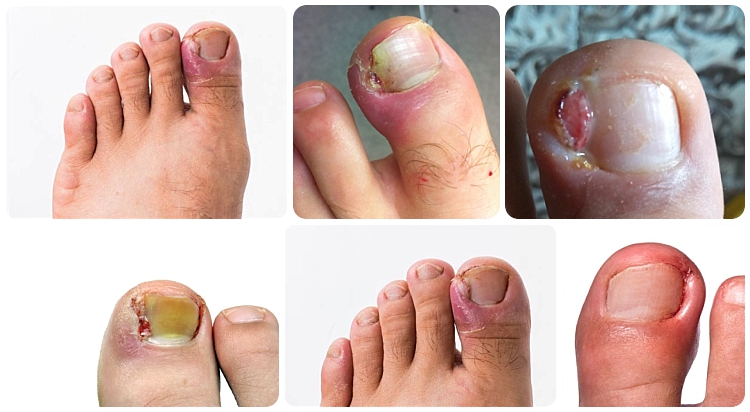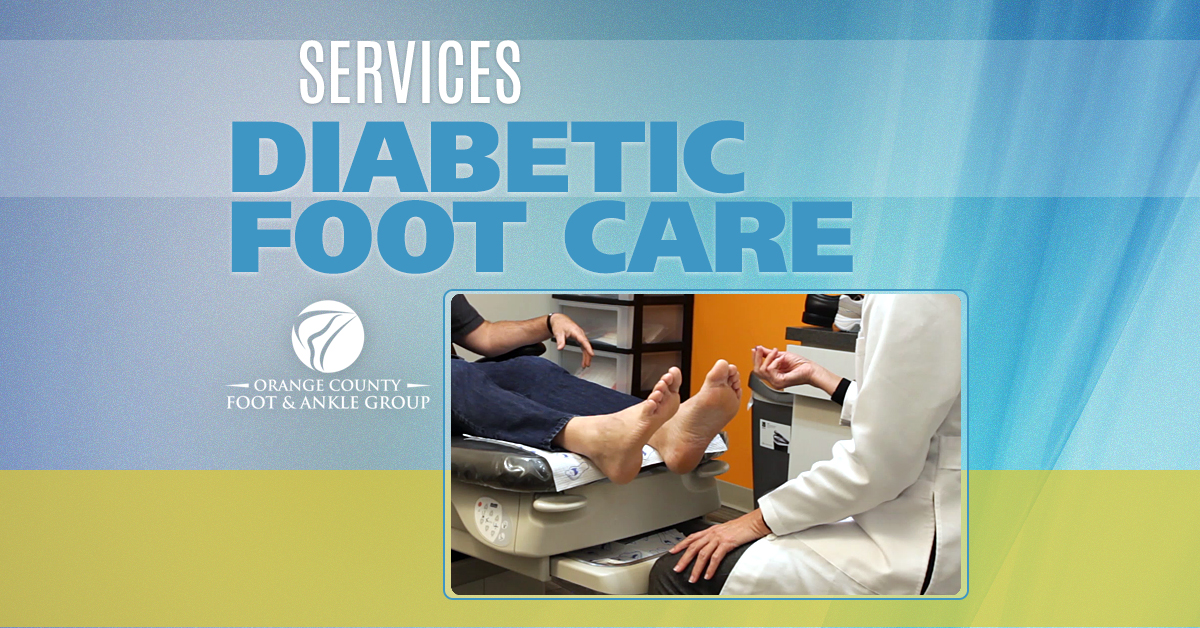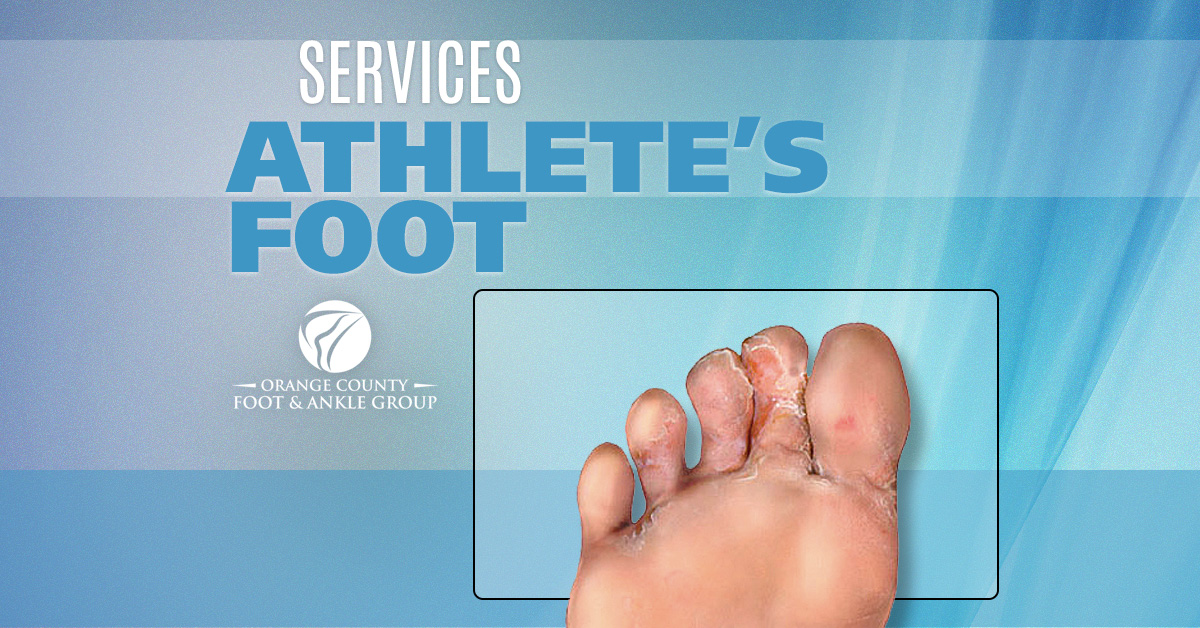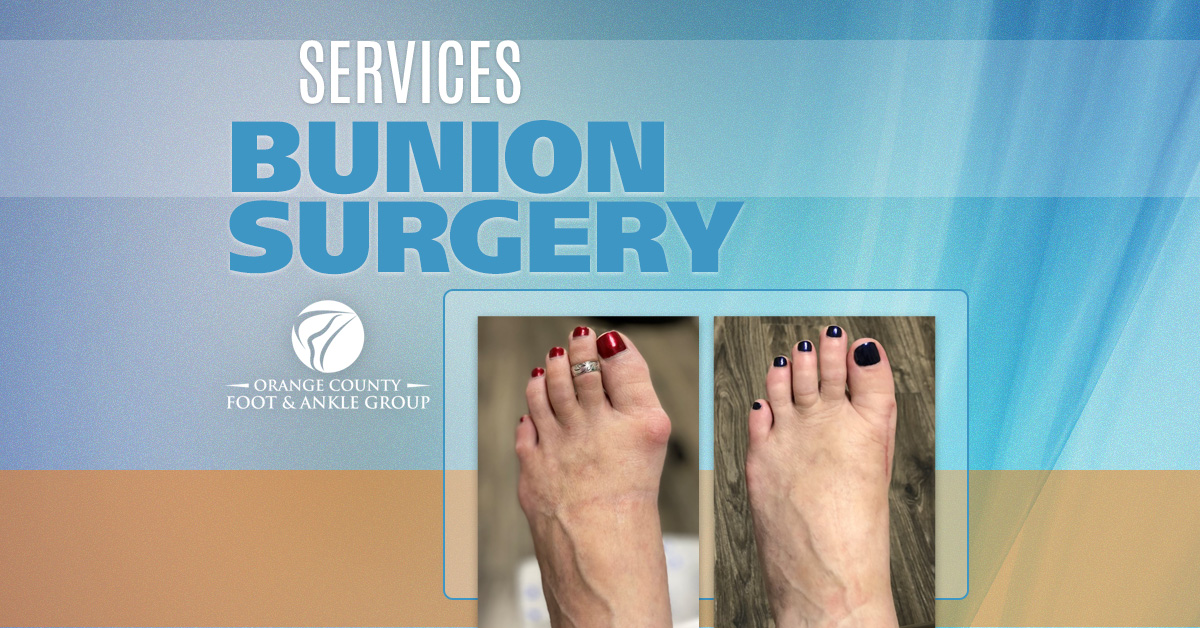Ingrown Toenails

Call to discuss Ingrown Toenail Repair/Removal today, or Schedule an appointment.
The physicians at Orange County Foot & Ankle Group in Huntington Beach are specialists in Ingrown Toenail repairs. Our physicians are the experts in Orange County Podiatry care and perform hundreds of toenail repair surgical procedures annually. Let’s get you walking correctly again.
Featured Video
WATCH VIDEO: Dr. Tam Nguyen performs an Ingrown Toenail removal.
WATCH VIDEO: Dr. Jonathan Bennett discusses Toenails.
What Are Ingrown Toenails?
Ingrown nails, the most common nail impairment, are nails whose corners or sides dig painfully into the soft tissue of nail grooves, often leading to irritation, redness, and swelling.

Usually, toenails grow straight out. Sometimes, however, one or both corners or sides curve and grow into the flesh. The big toe is the most common location for this condition, but other toes can also become affected.

WATCH VIDEO: Dr. Jonathan Bennett performs an Ingrown Toenail procedure.
Causes
Ingrown toenails may be caused by the following:
- Improperly trimmed nails
- Heredity
- Shoe pressure, crowding of your toes
- Repeated trauma to the feet from normal activities

WATCH VIDEO: Dr. Corey LeJeune performs an Ingrown Toenail procedure.
Symptoms
The following symptoms may be present with ingrown toenails:
- Pain
- Redness and swelling
- Drainage
- Odor
- Prominent skin tissue (bulged skin around the painful area)

WATCH VIDEO: Dr. Jonathan Bennett discusses Toenails.
At Home
If you suspect an infection due to an ingrown toenail, immerse the foot in a warm salt water soak, or a basin of soapy water, then apply an antiseptic and bandage the area.
People with diabetes, peripheral vascular disease, or other circulatory disorders must avoid any form of self-treatment and seek podiatric medical care as soon as possible.
Other “do-it-yourself” treatments, including any attempt to remove any part of an infected nail or the use of over-the-counter medications, should be avoided. Nail problems should be evaluated and treated by your podiatrist, who can diagnose the ailment, and then prescribe medication or another appropriate treatment.
Prevention
- Trim toenails properly: cut them straight across, not longer than the tip of the toes. Do not dig into corners and only gently round off corners with a nail file. Use toenail clippers.
- Avoid shoes with pointy or narrow toe boxes.
- Never rip or tear edges of nails.





